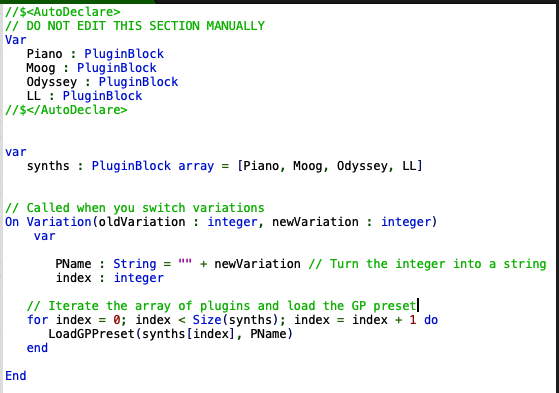Joey, xpansion, Angel and all other contributors to this thread,
Thank you all for this very thoughtful and thorough discussion. Especially you Joey for starting it, and for the others that contributed. I’m still a Forte user, and I remember several of you from the Brainspawn forums. I’ve been dreading switching for years, but know I have to get started. Should have done it during the COVID shutdown, but procrastination, of course. It’s just not something I’m looking forward to doing. And, to be honest, I was hoping maybe someone would come out with a “converter” that could take a Forte rack and turn it into a “Gig Performer” equivalent. Or a Cantabile or Camelot converter. And, I’ve been waiting to see which of these various programs are the best to switch to. I pretty much decided Gig Performer looked like the best platform to move to more than a year ago just based on reading the forums and looking at the focus on the program and pace of development, and that still seems to be the case. I would be interested to know if anyone knows of someone that was a Forte user that went with a different platform like Cantabile or Camelot. But I think I’m going to go forward with Gig Performer, especially seeing this thread and knowing there are folks here that really understand what Forte was, and can give me some pointers based on the pain of their conversion experience.
My band is a cover band (washparkband.com), playing funk/dance/rock from 70’s to today. We’re a 12 piece with horns, I’m the only keyboard player. My Forte rack file is 75MB, and takes about 1 minute and 45 seconds to load. It has 35 “Modules” (which are basically the VSTi plug-ins), and each “Module” then has several VSTs in its effects chain. The rack has 127 Scenes, and I typically use one Scene per Song. The rack takes up 3.998GB of memory when initially loaded. Because my rack has been in use for years, and because of Forte’s limitations, I have several versions of the same plug-in for backwards compatibility. For example, I have 4 instances of Pianoteq; 3.5., 4. 5 and 6. This is because my existing Scenes didn’t load properly when a new version of Pianoteq came out. Similarly, I have several instances of Kontakt as well; Kontakt 4 and Kontakt 5. This is not only for the above reason, but also, because of the limitations several of you mentioned about the dangers of loading samples at random times (can cause crashes), I have several instances of Kontakt that load at the time of the initial startup of my Rack, and do not change. I have other instances of Kontakt that do dynamically load from song to song. Switching between songs takes one second up to maybe 3 or 4 seconds max.
I typically use two keyboards on stage, and many splits amongst different songs. I also have a 16 pad drum panel that I use for percussion (I still use an Open Labs Neko as the controller, another beast that will soon bite the dust).
Joey, you mentioned that knowing what you know now, you would put more plugins into the Global Rackspace and supplemented along the way. This is an important architecture decision I would like to get correct from the beginning. How would this have affected you, had you done it this way? Loading time between songs? Rack creation time for new songs? I would appreciate any specifics you can provide to help guide how I go about this. It does seem tempting to just build one Rackspace for each song, using only the VSTs needed for that song, including the effects. But it’s going to take FOREVER to build 127 Rackspaces. I say it’s tempting because one of the biggest problems I have with Forte is that because it loads everything at the beginning monolithically, I’m bumping into system resource limitations. Not just memory, but lower level problems like heap and handle problems. So the idea of trying to recreate a monolithic approach like Forte probably doesn’t make sense. But having to literally build a Rackspace from scratch each time doesn’t sound great either. I realize I can probabably meet somewhere in the middle; build a Rackspace that is comprised of the instruments I use all the time, and then just copy that Rackspace song to song, adding the unique instruments I need for different songs. That will likely be my approach. And then maybe I put some of the effects into the Global Rackspace. Certainly the limiter, and some basic processing like reverb, echo, etc. can probably go into the Global Rackspace. But I would love additional insight as to what should go into the Global Rackspace vs. the individual Rackspaces.
Already just by reading this thread, I have a much better idea how to approach this, but any additional insight would be appreciated!


